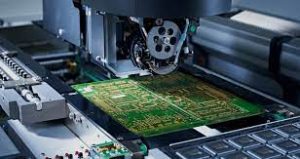Automated Circuit Board Assembly – The Typical Process
Automated Circuit Board Assembly
A circuit board is a key component in almost any electronic device. Its purpose is to connect different components together using a system of wires that transmit electrical currents. Traditionally, these boards were exclusively hand-assembled, but the rise of automated machines has changed that. Automated circuit board assembly offers a number of benefits over hand-assembly, including faster production and more consistent quality.
The first step of the PCB fabrication process is the creation of copper layers that are applied to both sides of a substrate. This material is known as a “dielectric” and helps to insulate the traces that carry the electric current. It also helps to limit the chances of a short-circuit between two conductive areas. When the copper layer has been created, it is coated with a protective substance called a solder mask to prevent oxidation and corrosion. This is a necessary step to ensure the integrity of the board.
Solder paste is a grey-coloured substance that is made up of tiny balls of tin and silver suspended in a flux material. The paste is applied to the PCB with a stencil, which is a thin piece of metal that has holes in it that match up with the pattern of pads on the circuit board assembly. The stencil ensures that the paste is evenly spread across the surface, avoiding spots where it is not needed.

Automated Circuit Board Assembly – The Typical Process
After the paste has been applied to the surface, a machine called a pick and place machine mounts the SMD components (surface-mount devices) onto it. This is a very delicate step as if any of the components are not properly placed, it could result in a defective circuit board. The machine uses a robot arm to “pick up” the component from a tape, then rotates it to the correct orientation and places it on the board.
At its core, circuit board assembly involves the meticulous arrangement and soldering of electronic components onto a printed circuit board (PCB). This process requires precision, attention to detail, and adherence to strict quality standards to ensure the reliability and functionality of the final product.
The resulting circuit boards are tested and repaired to guarantee they function correctly. This is a crucial step that requires careful attention to detail, especially as many of the components are small and difficult for humans to handle. Typical testing involves checking for things like the polarity of electrolytic capacitors, cathode and anode terminals of diodes, and the directional orientation of ICs.
As a final step, the PCBs are packaged and ready for shipment to customers. The automation of this step allows for fast production and consistent quality, which is essential in high-volume manufacturing. It is also much more cost-effective than hand-assembly, which can become expensive and time-consuming for a manufacturer. In addition, it is more reliable than manual assembly, which can often be subject to human error and inconsistencies.